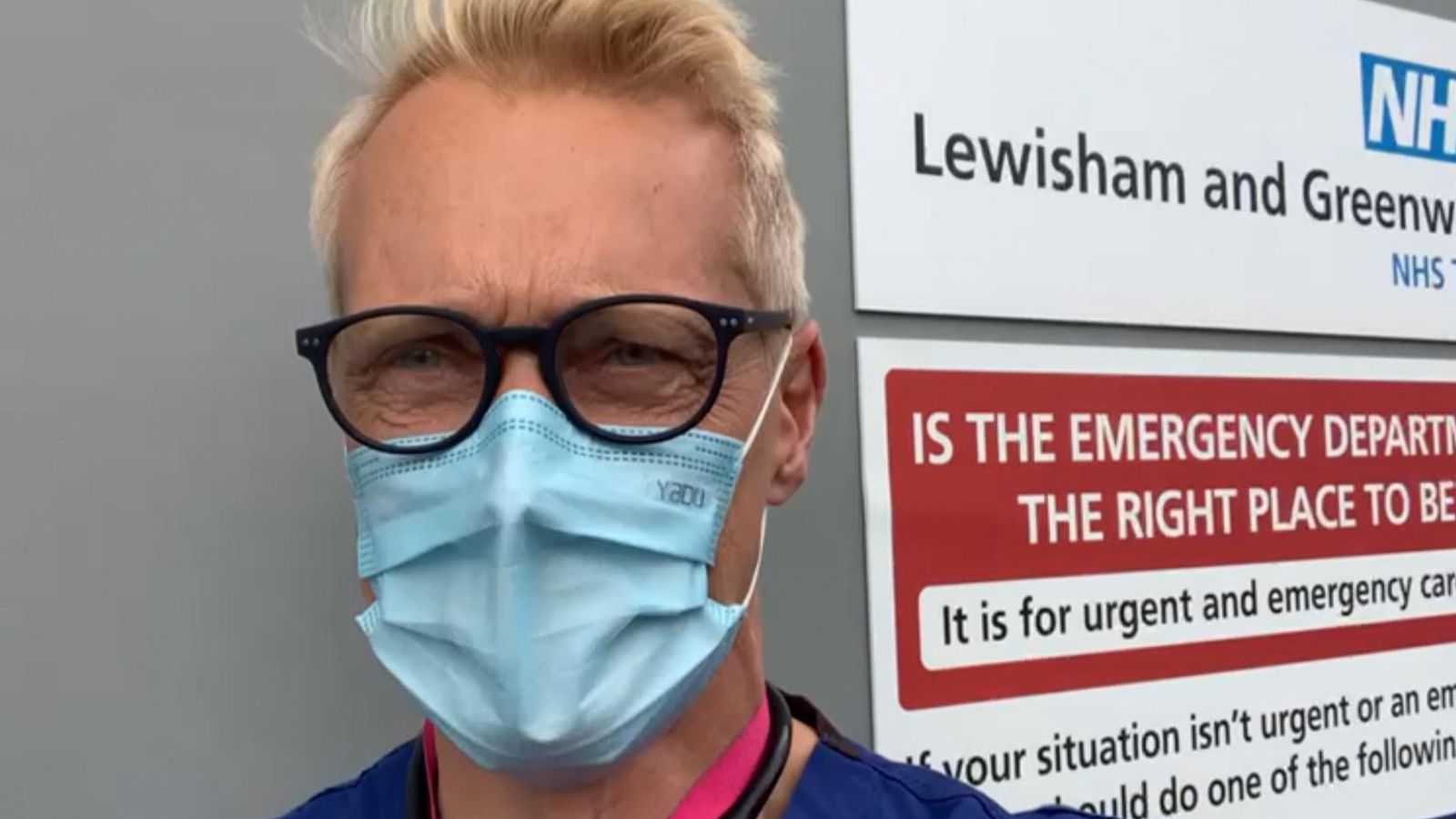A senior A&E doctor has described the “broken” system that consultants are trying to hold together on the second day of the junior doctors’ strike.
Dr Mark Harmon clocked on at 8am for his shift inside the emergency department at Lewisham hospital in south London.
Contingency plans worked well through the morning, but the strain quickly showed as the numbers of patients coming through the doors increased.
“There’s lot of inexperienced staff on the floor. Lots of nurses have been brought in as well and nurse practitioners,” Dr Harmon told Sky News.
“The issue really is one of flow because as soon as those patients start coming in and presenting at the front door there’s a limited capacity within the department, and obviously there’s a limited number of beds within the hospital.”
Halfway through his shift and the number of patients coming through the doors was increasing fast.
Their sister hospital in Woolwich put out a warning to patients that they could face up to a 12-hour wait for emergency care.
NHS delays: More than 50 operations postponed across Tayside and Fife after ceiling damaged
Can’t get through to NHS 111? You’re not the only one
Junior doctors’ strike: Patient care ‘on a knife edge’ as up to 350,000 appointments could be cancelled during four-day walkout
In Lewisham, Dr Harmon was very busy by early afternoon. “Majors cubicles are now all occupied, we have got over 20 patients waiting to be triaged at the front door,” he said.
“The challenge is how we can free up majors cubicles and prevent a lengthy wait for patients arriving at the front door.”
Please use Chrome browser for a more accessible video player
These are just some of the roles that junior doctors usually perform.
“No matter how hard we work within the department and within hospitals… there is limited capacity, but the priority is to make sure patients are safe,” said Dr Harmon.
Read more:
Why are doctors striking – and why it could be the worst yet
Strike organiser on holiday as doctors stage walkout
Be the first to get Breaking News
Install the Sky News app for free
‘We need to fix the system’
While supportive of his junior colleagues outside on the picket lines, he said the system they were all working in, even on non-strike days, was unsustainable with current demands and staffing levels.
“The system is broken and we need to fix it,” he warned.
“The workforce crisis is an immediate issue that we need to face, particularly with the junior doctor strike… that’s just an immediate issue.
“There are many challenges facing the NHS and the only way we’re going to address those in the short term and build a sustainable future is to invest in technology, because we’re not going to solve the workforce crisis overnight.”
Please use Chrome browser for a more accessible video player
As he finished his day shift, Dr Harmon was weary and stressed – that’s fairly standard.
“Like most of my colleagues I have stayed a little bit longer to finish a few things for my patients,” he said.
“It has been very busy this afternoon and quite stressful and the department is full.”
Halfway through this 96-hour walkout and the strain is starting to show in England’s hospitals and health services.






















